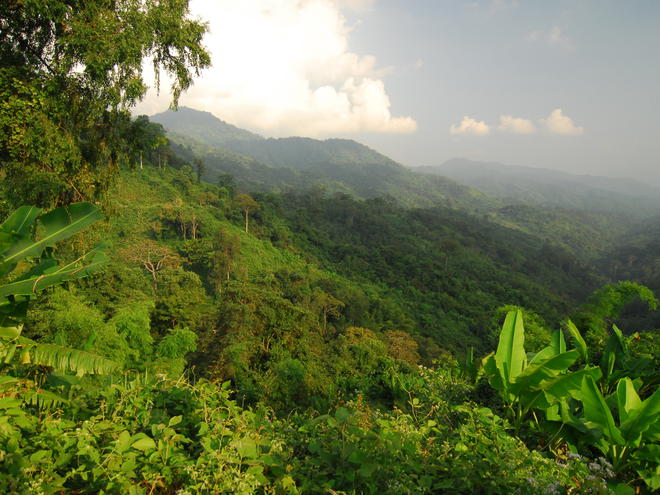4 unseen benefits of protecting tigers and their habitat
Published by the World Wildlife Fund





From the world’s largest mangrove forests in the Sundarbans to temperate forests in the snowy mountains of Bhutan, protecting tigers and their natural homes helps provide benefits for thousands of other animals and millions of people.
Landscapes where tigers live overlap with globally important ecosystems, many of which are in Asia’s last wilderness. These areas rich in wildlife and plant life harbor a wealth of critically important goods and services that millions of people rely on every day. Healthy tiger habitats help mitigate climate change, provide fresh water to animals and people, reduce the impact of natural disasters, and improve the health of local people. A new WWF report details these often unseen benefits that result from protecting tigers and their homes.
Unfortunately, tiger range—the places in which tigers roam wild and free—has plummeted by 95%, leaving populations fragmented and isolated in the remaining forests of Asia. The remaining range for wild tigers is at risk of reducing by nearly half due to unsustainable agriculture expansion and urbanization.
If tigers are to survive this century and beyond, their home range urgently needs protection and restoration. This requires sustained support from governments, businesses, and communities. We could lose the impressive range of benefits present in tiger habitat—along with the iconic species—if we don’t act swiftly and effectively.
WWF works to conserve and connect tiger habitat, monitors tigers and their prey, and collaborates with governments across the 13 tiger range countries to protect wild tigers.
Here’s a look at a four of the many unseen benefits that come hand-in-hand with tiger protection.
Forests
The presence and promise of tigers motivate governments to help protect Asia’s forests. Forest trees and other plants soak up carbon dioxide—a heat-trapping greenhouse gas contributing to the warming of the planet—and store it as they grow. Safeguarding tiger landscapes could protect the last remaining forests critical for this carbon storage, helping mitigate climate change. For example, forests protected for Amur tigers in Russia’s far east can absorb 130,000 tons of carbon per year—the equivalent of more than 25,000 cars on the road.
Forests also provide a source for clean air, medicinal plants, and jobs, among other benefits. Protecting forest landscapes for tigers will help save the last remaining forests critical for the survival of wildlife and people, and regulating global climate.
Fresh water
Hundreds of millions of people depend on water from places where tigers roam. Tiger landscapes overlap nine major watersheds that provide water for as many as 830 million people in Asia, including in urban areas in India, Malaysia, Indonesia, and Thailand. Water is critical to everything from agriculture and energy generation to industry and home use. In-tact, protected forests generate cleaner water and reduce the amount of sediment reaching rivers, streams, and reservoirs. They also play a key role in regulating the flow of water. Some forests, such as cloud forests, increase the amount of water flow while others, such as humid forests, reduce the flow. This natural regulation helps during times of drought or heavy rains, and benefits people downstream. Protecting tigers means protecting vital fresh water sources and functions.
Other wildlife
Tiger habitats are home to far more animals than just the iconic big cat. More than 30% of Asian elephant populations live within tiger landscapes, including in Bhutan, India, Indonesia, Malaysia, Myanmar, Nepal, and Thailand. That means protecting tiger habitats is important for elephants, too. And all Sumatran rhinos and Sumatran orangutans—both critically endangered—live within the tiger’s range. Where tigers thrive, so do other diverse plants and animals. When we invest in wild tigers, we can help save many other species.
Traditional and indigenous cultures
Protecting tiger landscapes, when done with sensitivity, contributes greatly to preserving endangered cultures and languages. Our “biocultural diversity”—the range of society, culture, and language on the planet—is disappearing as fast as our biodiversity. Linguists predict that between 50% and 90% of the world’s languages will disappear by the end of this century. Almost one-quarter of endangered languages assessed to date across the tiger range are spoken by traditional and indigenous people living with tigers as close neighbors—many of who rely on forests where tigers live for their livelihoods and survival. This reliance on bountiful natural resources means that conserving natural tiger habitat is vital to the survival of traditional and indigenous peoples across Asia.
Learn more about tigers and WWF’s efforts to save them.
Read the full article at: http://feedproxy.google.com/~r/WWFStories/~3/euD_RMKH-3g/4-unseen-benefits-of-protecting-tigers-and-their-habitat




